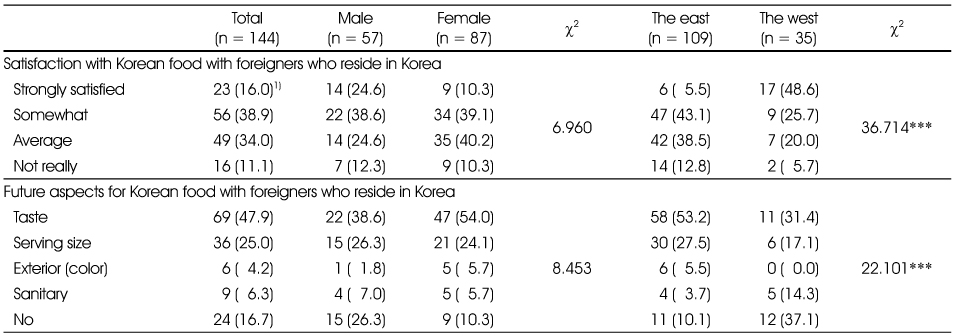Adaptability and Preference to Korean Food with Foreigners Who Reside in Seoul, Korea
Article information
Abstract
The purpose of this study was to investigate the Korea-resident foreigners's adaptability and preference to Korean foods. The survey was carried out among 144 foreigners living in Seoul, Korea (male 57, female 87; from the East 109, from the West 35). Based on the first impression of Korean food, 'spicy', 'strong taste of seasoning', 'salty' were most common. About 90 percent of the foreigners adapted to Korean food in six months. It took more time to adapt to Korean food for Western people, compared to people from the East. Factors that influenced their adaption to Korean food were shown to be 'efforts by myself' and 'from friends'. Foreigners posited positive attitude toward Korean food according to their answers like 'nutritionally great food' and 'food with interesting ways of eating'. Westerners appeared to be more satisfied with Korean food. 'Too strong seasoning taste' and 'too sweet' were pointed out for further improvements. Beef Bulgogi, (Korean) fruit, Beef Ribs, Pork Ribs, and Grilled Pork Belly in order were foreigners' favorite foods, but Soju, Korean Sausage, Sliced Rice Cake Soup, Radish Kimchi and Vegetable Side Dishes were not. Taken together, the adaptability and preference to Korean foods to foreigners were different according to the gender and cultural background. Target marketing strategy of Korean Foods should be considered for foreign customers.









